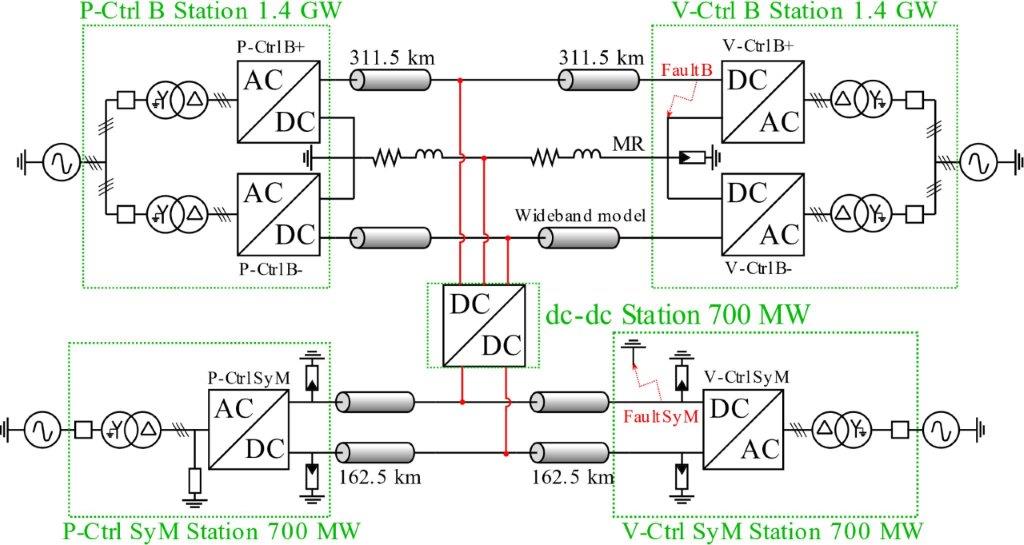PhD Daniel Gomez: “DC-DC converters for HVDC Heterogeneous Interconnections”

Abstract
In recent years, the study of HVDC grids has been of interest in some research projects but, its development is still uncertain. The dc grid can be planned beforehand or it can use the installed lines. But, from the installed HVDC projects, it can be identified different operating voltages, used technologies, and line topologies. There are two HVDC technologies: the line commutated converter (LCC), and the voltage source converter (VSC). Four different line topologies are identified: asymmetric monopole, symmetric monopole, bipole, and rigid bipole. Developing a dc grid interconnecting isolated lines with different characteristics cannot be possible without an intermediary device: the dc-dc converter.
This thesis studies the dc-dc converters interconnecting HVDC lines with different characteristics. These converters can be seen as the equivalent of ac transformers in dc applications because they are capable to adapt the voltage difference between two dc systems. These converters are also capable to adapt the line topology and different technologies. The power electronics required for these dc-dc converters provide increased control flexibility used to supply additional ancillary services that the classical transformers cannot furnish.
Three dc-dc converter topologies are modeled and simulated for the interconnection between a bipole and a symmetric monopole. The frontto-front modular multi-level converter (F2F-MMC) is chosen as the reference because it represents state-of-the-art technology. The second converter is the dc-dc MMC (dc-MMC) because of the topological similarity to the MMC. Then, a third converter is proposed and studied as a result of this thesis, the asymmetric dc-dc converter (ADCC). A set of simulations are performed for multiple operating points and faults scenarios. Then, the converters are compared quantitatively and qualitatively. The results and analysis are used to conclude and bring some perspectives for future works.
Director of thesis: Oriol Gomis Bellmunt (Universitat Politècnica de Catalunya)
Co-director of thesis: Marc Cheah Mañé (Universitat Politècnica de Catalunya)


